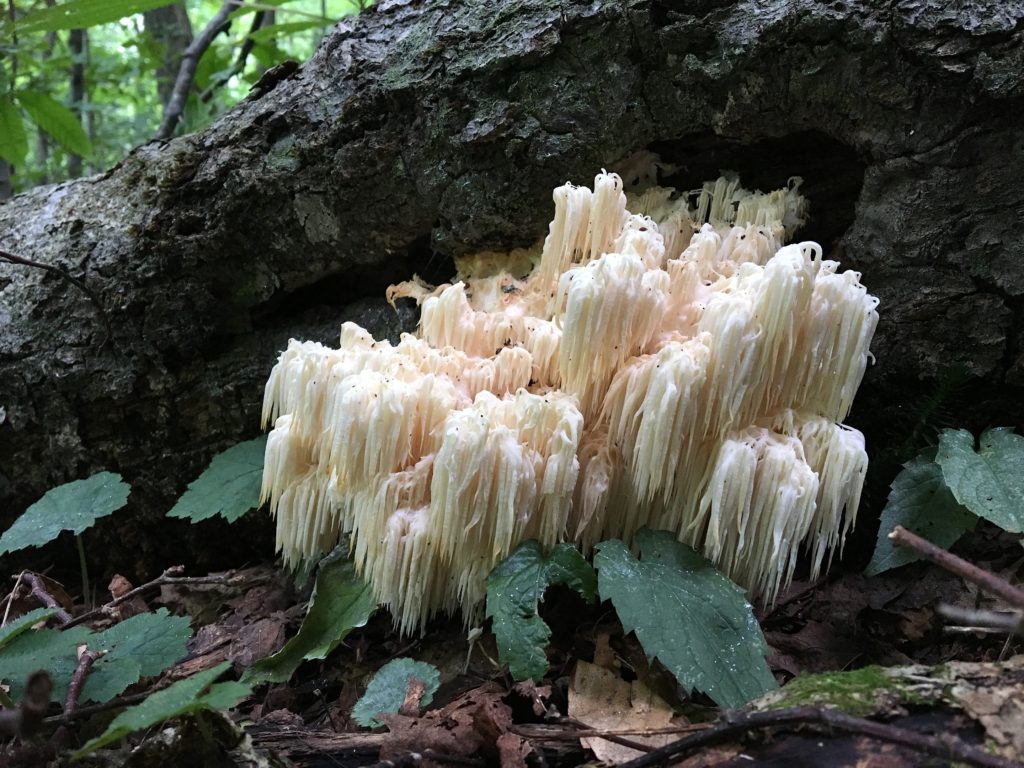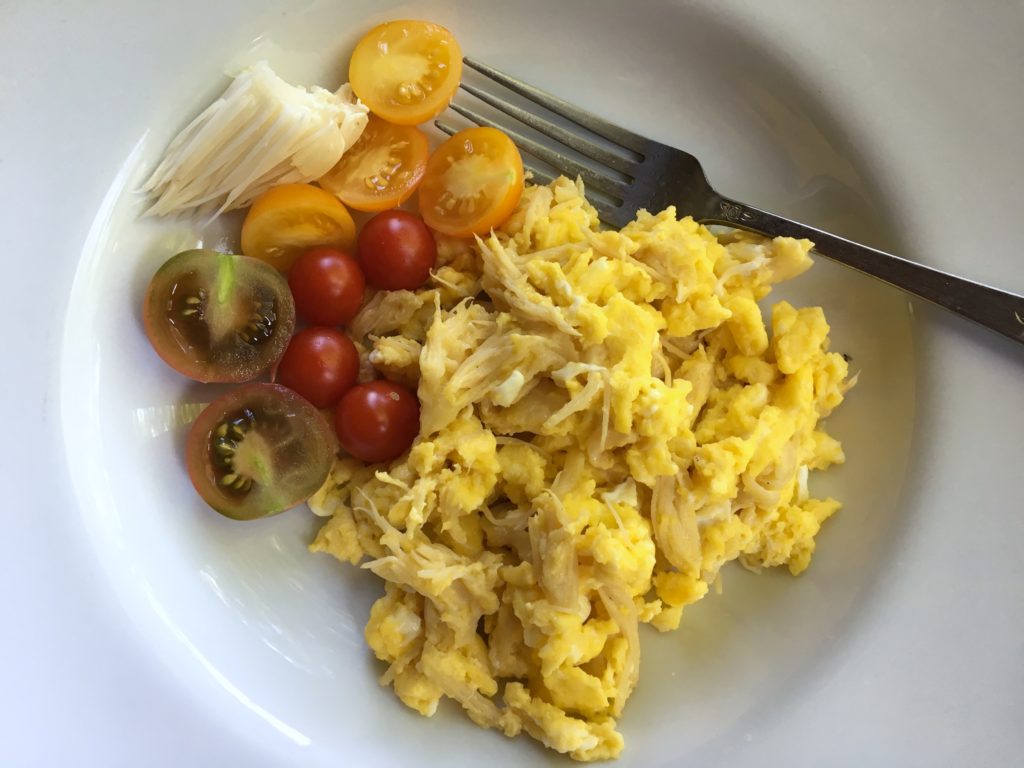There are several reasons to get excited about Lion’s Mane. First of all, it’s arrestingly beautiful, and when you spot it in the forest it appears to be luminous, as if a beam of light is shining through the forest canopy directly onto it. Lion’s Mane cascades over a log like a dreamy waterfall, frozen in time, with it’s milky stalactites. It’s also called the pom-pom mushroom for the obvious reason.
Second, it can’t really be mistaken for anything else. Some guides tell you to compare it to the poisonous yellow-tipped coral because when Lion’s Mane gets old the tips turn yellow, but the coral grows upwards. Even as a novice mushroom hunter though, I was pretty certain that what I had found (pictured above) was the real thing and that thought was backed up by two others more experienced than I am. (I have just eaten it, so if it’s not, it was nice knowing you.)
Furthermore, you can cultivate Lion’s Mane and it is widely said to have medicinal benefits, like Shitake and Reishi. Experts say that it improves neurological function and alleviates anxiety.
On top of that, it’s utterly delicious, tasting (raw) like a more meaty, fragrant, cooked lobster, with exactly the same texture.
If you’re looking to eat less seafood, you can buy kits to cultivate this exquisite delicacy and grow it yourself. Once you’ve tasted it, it’ll seem like a no-brainer. This mushroom is about 20% protein.
To prepare it, I sliced off the top part that had a lot of forest debris in it. Then broke off about five clumps of the tendrils and washed them thoroughly. (You never know what animal might have peed on it.) Then I separated the tendrils until I had what looked like about almost a cup of loose lobster meat and sweat it in butter. Then I added three beaten eggs and scrambled the mixture. You can see a piece of raw mushroom top left (below).


Pingback: Foraging: Black Trumpet Mushrooms | UPSTATE DISPATCH
Where can I go foraging for lions mane in NY?